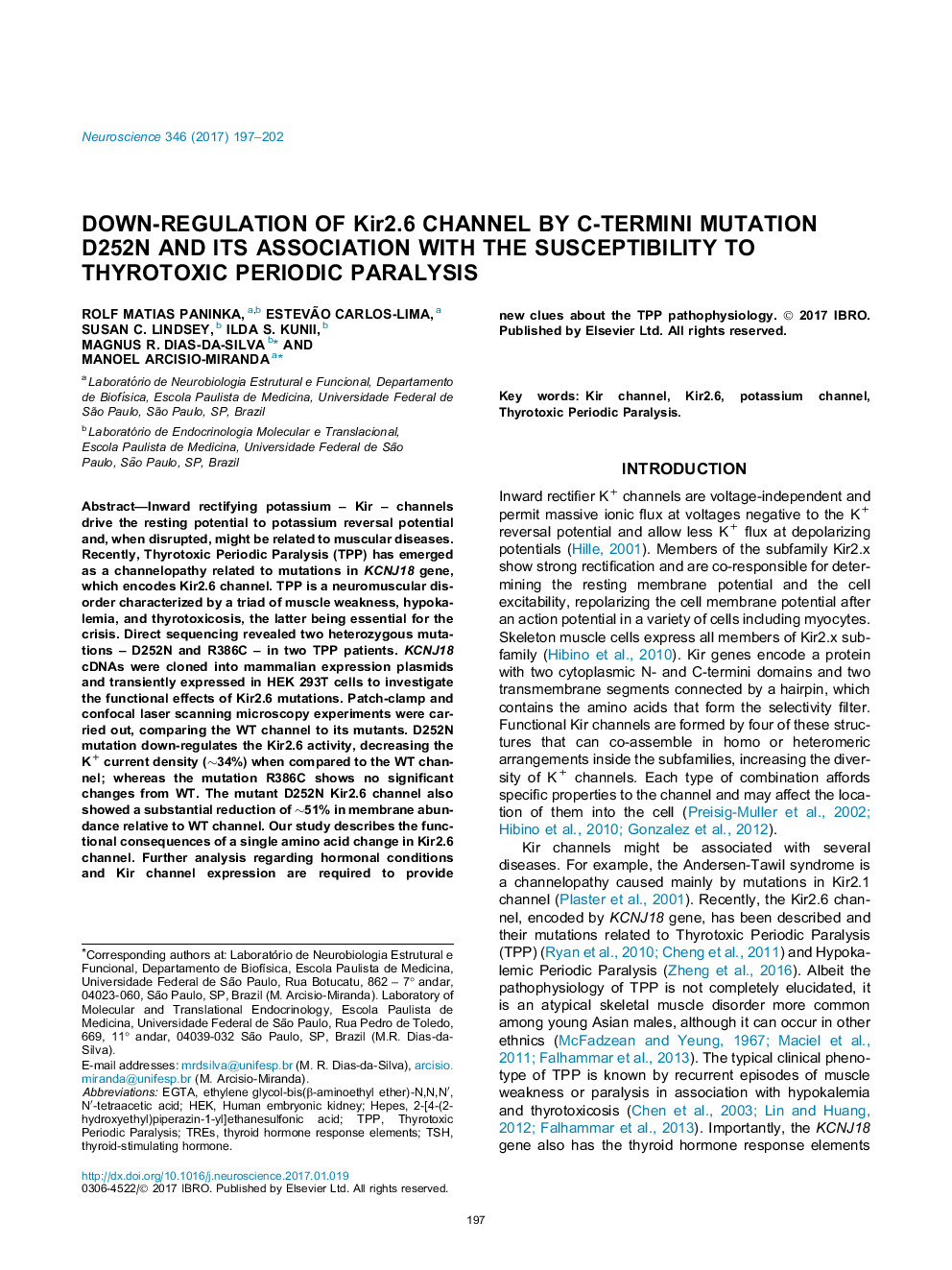| Article ID | Journal | Published Year | Pages | File Type |
|---|---|---|---|---|
| 5737962 | Neuroscience | 2017 | 6 Pages |
â¢Genetic analysis shows other Kir2.6 channel mutation in TPP patients.â¢Kir2.6 channel activity is down-regulated by c-terminus mutation.â¢A single D252N mutation reduces Kir2.6 plasma membrane abundance.
Inward rectifying potassium - Kir - channels drive the resting potential to potassium reversal potential and, when disrupted, might be related to muscular diseases. Recently, Thyrotoxic Periodic Paralysis (TPP) has emerged as a channelopathy related to mutations in KCNJ18 gene, which encodes Kir2.6 channel. TPP is a neuromuscular disorder characterized by a triad of muscle weakness, hypokalemia, and thyrotoxicosis, the latter being essential for the crisis. Direct sequencing revealed two heterozygous mutations - D252N and R386C - in two TPP patients. KCNJ18 cDNAs were cloned into mammalian expression plasmids and transiently expressed in HEK 293T cells to investigate the functional effects of Kir2.6 mutations. Patch-clamp and confocal laser scanning microscopy experiments were carried out, comparing the WT channel to its mutants. D252N mutation down-regulates the Kir2.6 activity, decreasing the K+ current density (â¼34%) when compared to the WT channel; whereas the mutation R386C shows no significant changes from WT. The mutant D252N Kir2.6 channel also showed a substantial reduction of â¼51% in membrane abundance relative to WT channel. Our study describes the functional consequences of a single amino acid change in Kir2.6 channel. Further analysis regarding hormonal conditions and Kir channel expression are required to provide new clues about the TPP pathophysiology.
Graphical abstractDownload high-res image (53KB)Download full-size image
